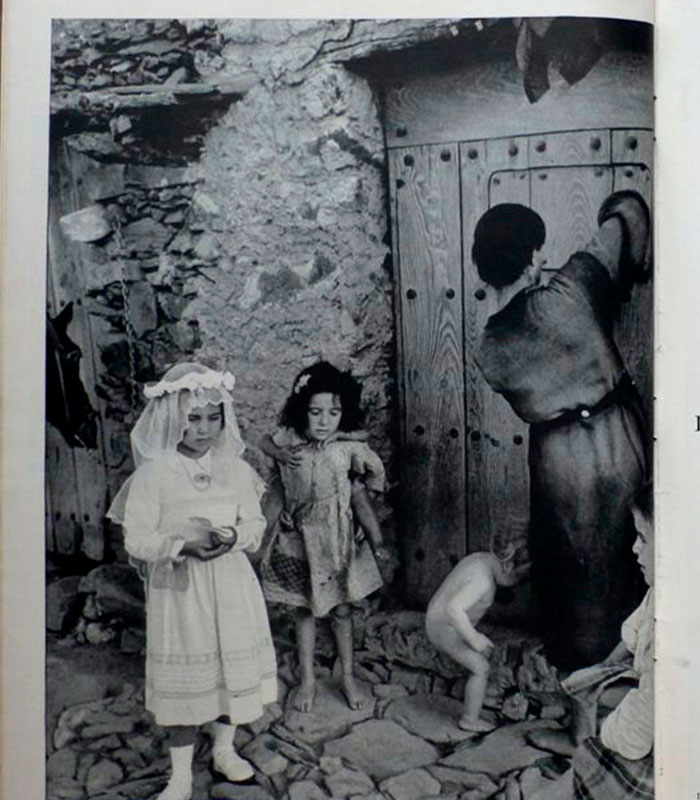In 1950 the prominent American photographer Eugene Smith arrived in Spain to report on the ‘prolonged drought’ of the country. One of the most famous international reporters explored with his camera a poverty-stricken and backward country until he came to Deleitosa, which he found suitable for his report. The photos he took there shocked the world and condemned the situation of that post-war Spain isolated from other countries.
In the two and a half months that ‘El Smith’, as he was known in Deleitosa, spent in the village he drew up a report of 24 pages and accumulated 45 rolls of film, 1,575 negatives, and 113 final printed photographs. He had arrived there in the spring of 1950 after reading an article in the ABC newspaper on darkest Extremadura. Together with his assistant Ted Castle and his interpreter Nina Pinado, he joined in with village life; he considered this to be necessary in order to carry out his work.
His photographs captured a society abandoned to its fate and its backwardness in which the streets were unsurfaced and there was no running water, telephone, electricity, or health infrastructure.
In this context of shortage and subsistence Smith’s lens focussed on the daily life of the people, their customs, their faces, their work… Spinners, peasants on the threshing floor, little girls on their First Communion, priests, civil guards, children sweeping with branches, ‘Long live Franco’ painted on walls…

